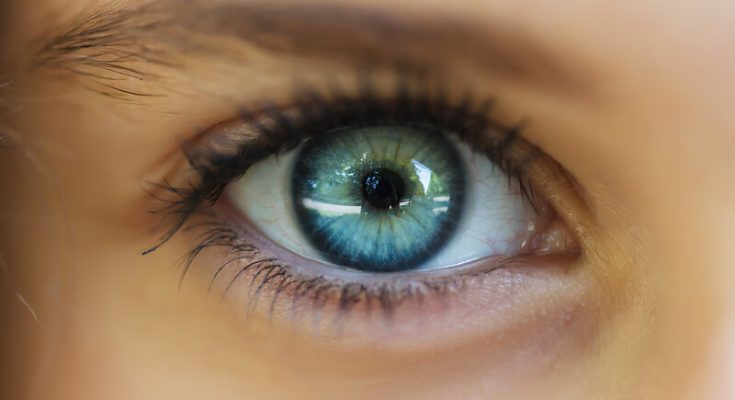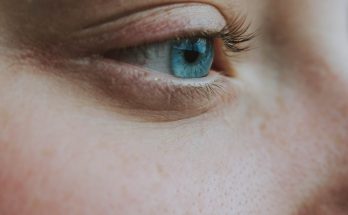Blepharospasm is also known as blepharism, eyelid twitch, or eye twitch. It is a condition in which the eyelids close involuntarily or spasms, often multiple times per minute. It typically begins gradually without any pain or awareness of the problem until it becomes an annoyance to those around you. It has been estimated that up to 3% of adults worldwide are affected by this condition at some point during their lives, but only 0.1% will have it chronically – or 1 to 2 people in every 10,000. The eyelid may spasm once or multiple times per minute and it can often be accompanied by migraine headaches and an eye condition called blepharitis.
Symptoms of Blepharospasm
Involuntary blinking or spasms of the eyelids are the most common symptoms of blepharospasm. The eyelids may close completely, partially, or just flutter quickly. The spasms may be constant or they may come and go. They can often be accompanied by a headache, eye irritation, and blurred vision.
People with blepharospam typically report that their episodes of blinking are usually involuntary and without any warning; they also report that the blinking episodes are often more severe when the person is tired or stressed. Some people describe their blinking episodes as feeling like something in their eye or an eyelash tickling them.
Some of the most common symptoms associated with blepharospasm include: tearing, redness, dry eyes, irritation, pain, headache and blurred vision. About half of all people with blepharospasm experience dry eye symptoms from decreased tear production, called aqueous deficient dry eye. Increase blinking helps to moisten the eyes and protect them from damage. Other common symptoms associated with blepharospasm include a feeling of a foreign object in the eye or having something moving in your eye when you blink.
In some cases, a person with blepharospasm will experience decreased vision or even blindness if the spasms affect both eyelids and the opening through which light passes to the back of your eye. This is because when you close your eyes tight it prevents the tears from draining out as they should. In turn, this causes an increase in the pressure within the eyeball and in some cases can cause damage to parts of the eye.
If you have blepharospasm, you may notice that closing your eyes tightly makes your symptoms worse immediately following them. However, if you just blink normally, it often reduces or eliminates the spasms. Oftentimes people with blepharospasm are unaware that they are even closing their eyes tightly.
Causes of Blepharospasm
The exact cause of blepharospasm is unknown, but it is believed to be a result of abnormal function of one or more of the muscles that control the eyelids. It may be caused by problems with the nerves that supply these muscles, as well as changes in the chemical composition of the tears and inflammation of the eyelid. Some cases may also be due to stress or anxiety. Other possible causes of blepharospasm include:
- Medication side effect: certain medications, such as muscle relaxants and antidepressant drugs, may cause blepharospasm as a side effect.
- Medication withdrawal: when certain medications that reduce the tension in the muscles of the eyelids are suddenly stopped after long-term use, spasms can result.
- Brain damage: blepharospasm may be caused by problems with the brain or nervous systems, such as stroke, multiple sclerosis (MS), and overactive thyroid gland.
- Stress or anxiety: many people who have blepharospasm report that their spasms are triggered by stressful situations, but this is not true in all cases.
- Genetic condition: a rare genetic condition called Meige syndrome may involve blepharospasm in addition to other symptoms.
Tiredness or stress can make blepharospasm worse, especially if it is caused by an underlying problem like MS. It also tends to get better when you are relaxed, so avoiding stressful situations can help.
Treatments of Blepharospasm
There are a few different treatment options available for blepharospasm.
- Medication: medications taken by mouth, such as botulinum toxin injections, are often the first line of treatment for blepharospasm. These medications help to reduce the spasms by blocking the nerve signals that cause them.
- Physical therapy: physical therapy may also be recommended to help strengthen the muscles around the eyes and improve their function. This can help to reduce or eliminate the spasms.
- Surgery: in some cases, surgery may be recommended to release the tension on the muscles around the eyes. It may involve removing the muscles that close your eyelids, as well as those that move your eyes. This may be done for people who are not getting good results from medications or physical therapy.
- Eye drops: eye lubricants, also called artificial tears, can help to relieve dryness and irritation associated with blepharospasm.
- Eyelid scrubs: it is sometimes helpful to remove the buildup of dead skin cells around the eyelids. You can accomplish this at home by gently scrubbing the eyelids with a washcloth and baby shampoo or commercially available eyelid scrubs.
- Eyelid tape: it may also help to use special adhesive tapes that are designed to open your eyes more easily during sleep time, allowing for easier blinking and reduced spasms.
- Eyelid stabilization devices: special devices such as specially designed glasses can help with the function of the eyelids. These may reduce stress on the muscles and also encourage proper, relaxed blinking.
- Contact lenses: contact lenses can be made to fit over your closed eyelids while you sleep. This allows for greater comfort and reduces spasms.
- Lid stretch therapy: lid stretches are exercises that are designed to keep the eyelid muscles from contracting. Lid stretches should be done under supervision by an eye doctor or physical therapist.
Blepharospasm is a condition in which the eyelids close involuntarily or spasms, often multiple times per minute. The involuntary closing of the eyes can cause problems for people with visual impairments and may result in dry eye syndrome. If you are experiencing spasms in your eyelids, it is important to speak to your doctor so that they can help you find the best treatment option for you.



